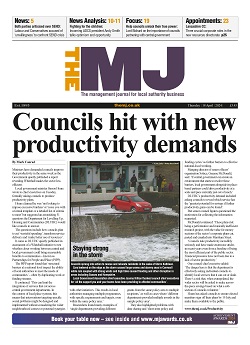The huge impact of the COVID-19 pandemic has been felt by people and places across the country over the last two and a half years but none more so than in our cities.
As chief executive of one of the UK’s Core Cities and a member of the Commission on Creating Healthy Cities, together with Dr Frances Hollis, emeritus reader in architecture at London Metropolitan University, I was invited by the Independent Transport Commission to give its annual lecture for 2022 on the future of cities and how regional capitals like Nottingham can continue to prosper post-COVID.
So what impact has the pandemic had?
With lockdown restrictions and home working, people not only moved around less, the way they travelled also changed, with public transport usage seeing a major decline. Office jobs commonly located in city centres were those that could be done most readily from home.
Ongoing social distancing and the continued closure of businesses such as restaurants, nightclubs, sports stadiums and fashion retail centres had a big impact on our city centres with people more likely to shop online or support their local neighbourhood high street.
But what does this mean for the future and what practical steps should city leaders take to reshape our city centres and how people move about?
Cities are where most of us live and our city centres are the beating heart. They always have and always will evolve and develop.
In Nottingham, I believe we have reasons to be cheerful about the future of our city centre.
Nottingham’s Broad Marsh is one of the most significant city centre development sites in the UK and an opportunity for the city to lead the way in reimagining the future, which is why it’s attracting significant local and national interest from key partners and Government alike.
Pre-pandemic, Intu had been leading the development of a new Broad Marsh shopping centre but by Summer 2021 the company had gone into administration and the lease for the half-demolished 1970s structure passed to the council.
We held the Big Conversation, our biggest public engagement exercise ever engaging with over 3,000 people, which showed an overwhelming desire to entirely reimagine Broad Marsh and not just build another shopping centre.
We needed help to get the right expertise and passion for what to do next so we set up an Independent Advisory Group, chaired by Greg Nugent, the former director of brand, marketing and culture for the London 2012 Olympics and Paralympics Games who brought together a mix of local, national and international thinkers including Sir Tim Smit and Nottingham’s own Vicky McClure, of Line of Duty fame.
Heatherwick Studio – led by world renowned British designer Thomas Heatherwick – was commissioned to create a bold new vision for the site which reimagines and repurposes the structural ‘frame’ of the old shopping centre – retaining its embedded carbon – to generate more than 4,000 jobs, create 1,000 new homes and provide more than 400,000 square feet of high-end business and office space.
The Frame (as it will be known) is surrounded by the Green Heart, a hectare of new green space at the centre of the transformation.
But how do we get to this new green city centre and how do we move around it in a sustainable way?
Nottingham’s integrated transport system is also key to the future of the city.
We’ve retained our city bus company in public ownership and made significant investment in public transport including trams, buses and Park & Ride which helped grow our public transport use from 67m trips in 2004 to more than 80m in 2019. We introduced a Workplace Parking Levy back in 2011 which helped fund the tram network extension and improvements to Nottingham’s railway station.
Nottingham City Transport has the largest fleet of bio-gas double decker buses in the world. Even our remaining diesel buses use technology which reduces their emissions by 90%.
We’re introducing integrated smart ticketing across all forms of transport and also e-mobility hubs which support the roll out of electric vehicles including e-scooters, wireless electric taxi charging and fleet vehicles which actually put electricity back into the grid.
We’re also investing in our cycle network, including a new pedestrian and cycle bridge over the River Trent.
All of these measures support Nottingham’s target to be a carbon neutral city by 2028 and have helped us avoid the need for a Clean Air Zone as we are already actively reducing air pollution.
So what is the future of the city centre after the pandemic?
Nottingham’s story outlines many practical steps city leaders may want to consider when shaping their urban areas.
Our role as a local authority, as a steward of place, convenor and democratic-led local policy maker, means that we have the great privilege of listening and responding to the needs and views of our Nottingham people.
With skill and pragmatism we can ensure that our city centres adapt successfully in a post pandemic world. Let us remain optimistic.
Mel Barrett is chief executive of Nottingham City Council

